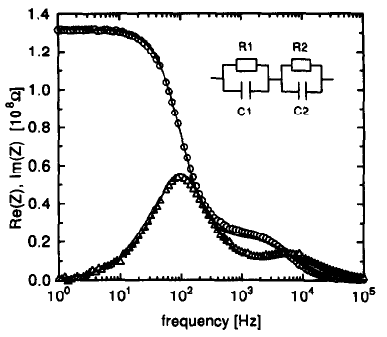-
The temperature dependence of the Raman T2g lattice mode in K2S crystals
B. Bertheville and H. Bill
Solid State Ionics, 139 (1-2) (2001), p159-162


DOI:10.1016/S0167-2738(00)00823-7 | unige:3701 | Abstract | Article HTML | Article PDF
The first-order Raman spectrum of K2S was measured over the temperature range from 10 to 742 K. The temperature dependence of the linewidth can be explained using results from the anharmonic lattice dynamics approach. Both the cubic and the quartic anharmonic interactions are of importance for this system. At 293 K, the Raman line is at ωT2g=128 cm−1 with a full width at half maximum ΓT2g=2.9 cm−1.
